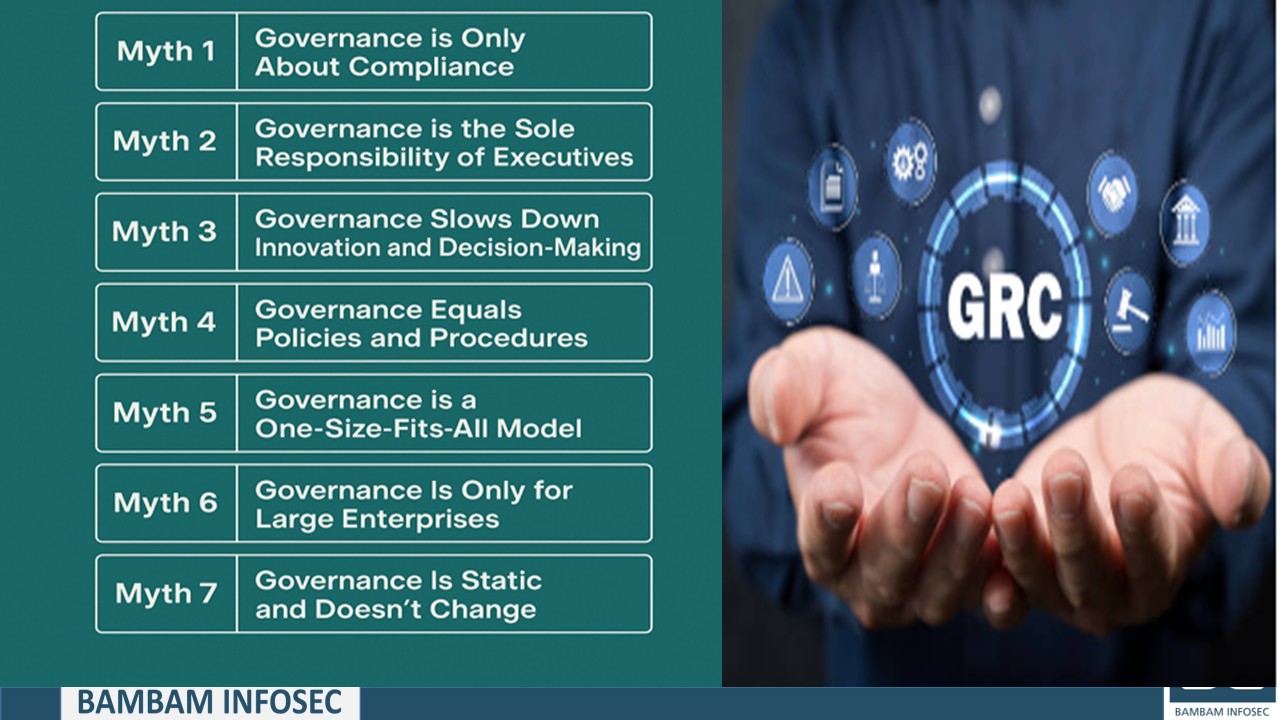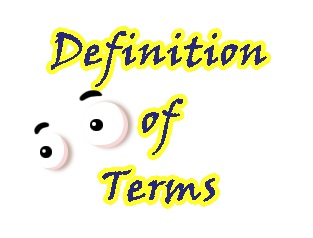In today’s complex risk landscape, organizations are under increasing pressure to implement strong Governance, Risk Management, and Compliance (GRC) programs. Governance, Risk, and Compliance (GRC) is a foundation framework that ensures organizations operate ethically, manage risks effectively, and comply with regulatory requirements. Governance, in particular, is the backbone of a well-functioning organization—it defines the structure, authority, accountability, and ethical framework that drives responsible decision-making. Yet, despite its importance, governance is frequently misunderstood or misrepresented, leading to inefficiencies in programs, compliance failures, and missed strategic opportunities.
Dispelling myths about governance in GRC is essential for organizations seeking to thrive in a world marked by complexity, uncertainty, and increasing stakeholder expectations. Let’s explore some common myths about governance in GRC and underscore its essential role in sustainable business success.
Myth 1: Governance is Only About Compliance
One of the most common misunderstandings is that governance exists solely to fulfill regulatory requirements. Organizations that view governance solely as compliance tend to take a reactive approach, addressing regulatory concerns only when violations occur. This exposes them to fines, lawsuits, and reputational damage. A proactive governance model ensures organizations are ahead of regulatory changes, reducing legal risks.
Reality: Governance goes far beyond compliance. While compliance focuses on adhering to laws and regulations, governance is about setting strategic direction, defining decision-making frameworks, ethical leadership, and fostering a culture of accountability. A well-governed organization aligns its objectives with its mission, promotes transparency, and nurtures an ethical culture—not just ticking compliance checkboxes.
Key Point: Governance drives performance and integrity; compliance is just one output of good governance.
Myth 2: Governance is the Sole Responsibility of Executives
Many assume that governance solely falls under the authority of senior management and board members. When governance is perceived as the sole responsibility of executives, employees at lower levels may disengage from ethical decision-making. This leads to an organizational culture where accountability is weak, increasing the risk of fraud, unethical behavior, and poor internal oversight.
Reality: Yes, leadership plays a crucial role in setting governance structures, but governance is a shared responsibility across all levels of the organization. From executives to frontline employees, everyone contributes to governance through ethical decision-making, compliance awareness, and risk management practices. Managers, in particular, serve as a bridge between strategic policies and operational realities. A robust governance structure fosters a culture of integrity across the enterprise.
Key Point: Governance is embedded in the culture and operations—it is everyone’s responsibility, not just the board members or executives.
Myth 3: Governance Slows Down Innovation and Decision-Making
Many believe that governance frameworks impose unnecessary bureaucracy, hindering creativity and technological advancements. Without structured governance, businesses may pursue risky strategies without safeguards—resulting in failed products, security breaches, or ethical dilemmas. When governance is integrated effectively, it enables innovation rather than hindering it.
Reality: When done right, governance enables innovation by providing clarity, boundaries, and strategic alignment. Weak governance creates confusion and risk, while effective governance establishes risk-aware decision-making processes, allowing organizations to innovate responsibly while minimizing potential pitfalls. The myth stems from rigid, bureaucratic processes that are wrongly labeled as “governance.”
Key Point: Good governance fosters agility by ensuring the right people make the right decisions with the right information.
Myth 4: Governance Equals Policies and Procedures
The misconception that more policies equate to stronger governance can create documentation overload with excessive rules that employees struggle to navigate. Instead of improving operations, these policies can introduce inefficiencies, leading to non-compliance due to complexity rather than the intent. Governance is about clarity, enforcement, and alignment with business objectives—policies should be meaningful and practical rather than overwhelming.
Reality: Policies and procedures are tools of governance, not governance itself. True governance is about values, decision rights, risk tolerance, and organizational behavior. While documentation is important, it must reflect living principles that guide how decisions are made and how responsibilities are assigned.
Key Point: Governance is a mindset and framework—not just a manual of rules.
Myth 5: Governance is a One-Size-Fits-All Model
Some organizations assume that they can apply a universal governance framework to their unique operational challenges. However, governance must be tailored to an organization’s industry, size, and risk profile. A one-size-fits-all governance approach can result in rigid structures that fail to address an organization’s unique needs. Companies that adopt governance models unsuitable for their industry or size may find themselves burdened by unnecessary bureaucracy or weak oversight.
Reality: Governance must be contextual. It should reflect an organization’s size, industry, risk appetite, regulatory environment, and culture. A multinational corporation will require a different governance structure compared to a startup or a nonprofit. Copying frameworks from large enterprises or highly regulated sectors can overload smaller or more agile organizations, creating bureaucracy. A mature tech startup won’t have the same governance needs as a multinational bank—and that’s okay. Adaptability is key to ensuring governance aligns with an organization’s strategic objectives.
Key Point: Governance should be tailored, scalable, and aligned with your business goals—not cloned from someone else’s model.
Myth 6: Governance Is Only for Large Enterprises
Governance is frequently seen as something reserved for corporations with sprawling global operations, complex regulatory burdens, and boardrooms full of executives. Small businesses, startups, and even solo entrepreneurs face risks, make strategic decisions, and interact with customers and regulators. Governance helps ensure those actions align with their mission, values, and legal obligations—regardless of size.
Reality: Governance isn’t about scale—it’s about structure, accountability, and ethical decision-making. Every organization—regardless of size or industry—needs governance. Small and medium-sized businesses face risks just like large corporations, and without governance, they are even more vulnerable. Tailoring governance frameworks to the organization’s size and maturity is more effective than avoiding it altogether.
Key Point: Scalable governance is essential for sustainable growth and resilience—even for startups.
Myth 7: Governance Is Static and Doesn’t Change
Some assume that once governance structures are in place—such as committees, policies, or charters—they remain fixed indefinitely. Organizations that treat governance as static may miss regulatory changes, fail to address new risks or overlook opportunities for improvement. Effective governance is dynamic, adapting as the business grows, markets shift, and new threats emerge.
Reality: In dynamic environments, static governance frameworks quickly become obsolete. Effective governance evolves with the business landscape, regulatory requirements, and emerging risks. Periodic reviews and adaptability are crucial to keep governance aligned with organizational goals.
Key Point: Governance is a dynamic capability that must evolve with internal and external changes.
Conclusion
Dispelling these myths is essential for organizations seeking to build effective GRC frameworks. Governance in GRC is not just about rules—it’s about purpose, accountability, and performance. Breaking free from myths and misconceptions allows organizations to design governance models that truly support sustainable success rather than viewing governance as an impediment.



